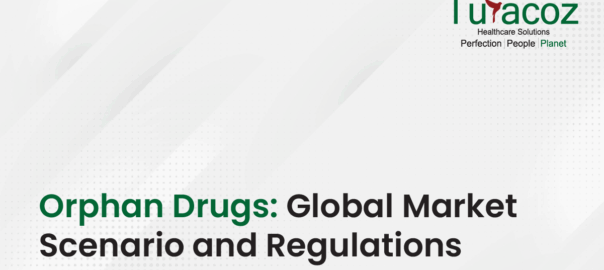Global Market Scenario for Orphan Drugs
Orphan drugs are the drugs which are used for treatment of orphan/ rare diseases. After being neglected for a long time, the global market for orphan drugs is now witnessing a boom. The market is showing a constant growth and is expected to reach US$225 billion by 2024 due to recognition of their importance in healthcare. Other than this, the growth in orphan drugs is further attributed to recent advances in research modalities, increasing awareness and incidence of rare diseases, and improved incentives by regulatory authorities for development of orphan drugs. Favorable regulatory policies for orphan drug market in the United States have led to a fast growth of this market across the world. Pharmaceutical companies such as Actelion Pharmaceuticals Ltd., AbbVie, Inc., Alexion, Inc., Bayer AG and, AstraZeneca Plc are the key players in the orphan drug market.
Evolution of Orphan Drug Market Over the Years
As already mentioned, favorable regulations for the orphan drugs plays an important role in their increasing development and market growth. This is evident from the increasing numbers of orphan drugs in market from just 38 orphan drugs in 1983 to over 500 orphan drugs hitherto. Furthermore, over 230 orphan drugs had been approved by FDA in past decade and numbers are still increasing.
Development of Regulations and Guidelines for Orphan Drugs
Growth in orphan drug development led to emergence of US Orphan Drug Act 1983. With its’ successful outcomes, the act was then adopted by other nations in different customized forms. Below is the summary of the current regulations and guidelines for orphan drugs in different countries:
United States Orphan Drug Act
The act came into existence in 1983 and underwent further amendments in 1984, 1985, 1988, 1990 and, 1992. This act prioritized the treatment of rare diseases by facilitating research and development in field with provision of large amount of incentives for the same. Further, the act reduced the cost of developing new orphan drugs by wavering the fees at different stages of drug development such as new drug application fee, annual establishment and product fees after drug approval. Moreover, the act has a provision of tax credits on clinical research for orphan drugs along with the rights of exclusive marketing of product by pharmaceutical company for 7 years of development.
Japanese Orphan Drug Regulation
This act was formulated in 1993. As per these guidelines any drug would be categorized as orphan drug if it fulfills below mentioned criteria:
- The disease targeted by orphan drug should be either incurable without any existing treatment or else the efficacy and safety profile of the new drug should surpass the ones already existing in market.
- The prevalence of the rare condition must be less than 50,000; or the incidence must be 4/10,000 individuals.
The evaluation of new orphan drugs as per guidelines is done on priority basis resulting in fast track approvals and marketing authorizations. Further, pharmaceutical company would get added on incentives due to extended validity period of about 10 years. Moreover, reimbursement of 50% of drug development cost and waivers of taxes up to 6% on research and development of orphan drugs as per guidelines further ads onto the profits generation by pharmaceutical companies.
European Orphan Drug Act
This act came into existence in 1999. As per European Union (EU), the companies sponsoring orphan drug can participate in consultations and provide scientific advice related to development of orphan drugs. The fee for protocol assistance and follow-up is completely reduced by the act. Further the act waivered off all the fees for pre-authorization inspections. Moreover, there is provision for 50% reduction in fees on new marketing approval applications by large sized enterprises. The act also eliminated complete charges for not only marketing authorization, but post-approval charges are also wavered during the first year. However, this is applicable only to small and medium companies. Further profits to pharmaceutical companies can come from the provision of 10 years of exclusive marketing as per the act.
Turacoz Healthcare Solutions take an initiative to draw attention of healthcare providers and pharmaceutical companies towards the changing trend in global market scenario for orphan drugs. Further, this blog provides updated information about rules and regulations related to these drugs different countries. Turacoz provides high quality end to end scientific/medical writing support to the industry and academia. We expertise in several clinical trial related documents like Investigator Brochures (IBs), Protocols, Clinical Study Reports (CSRs), Clinical Evaluation Report (CER) and Common Technical Documents (CTDs) Prescribing Information (PI).














